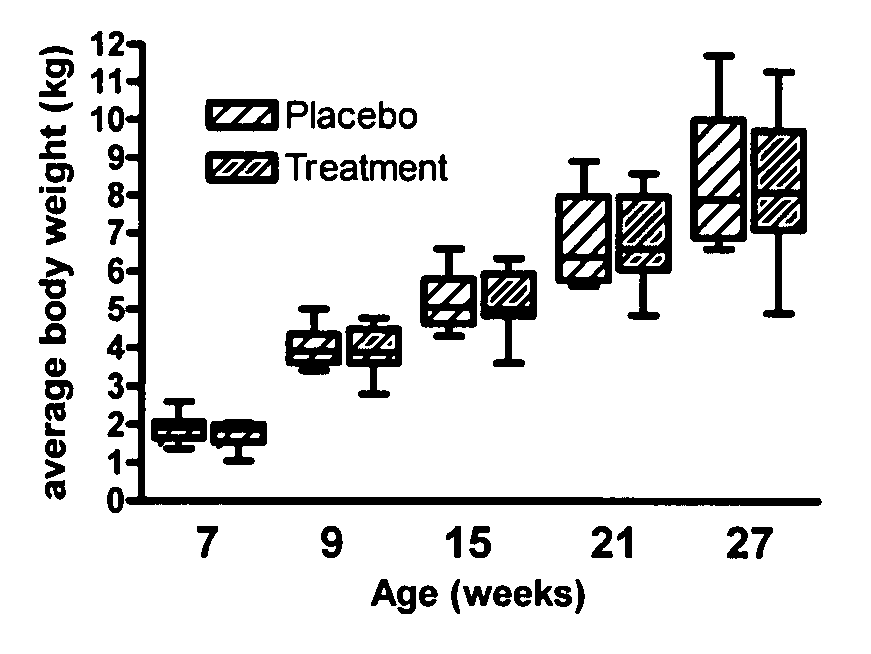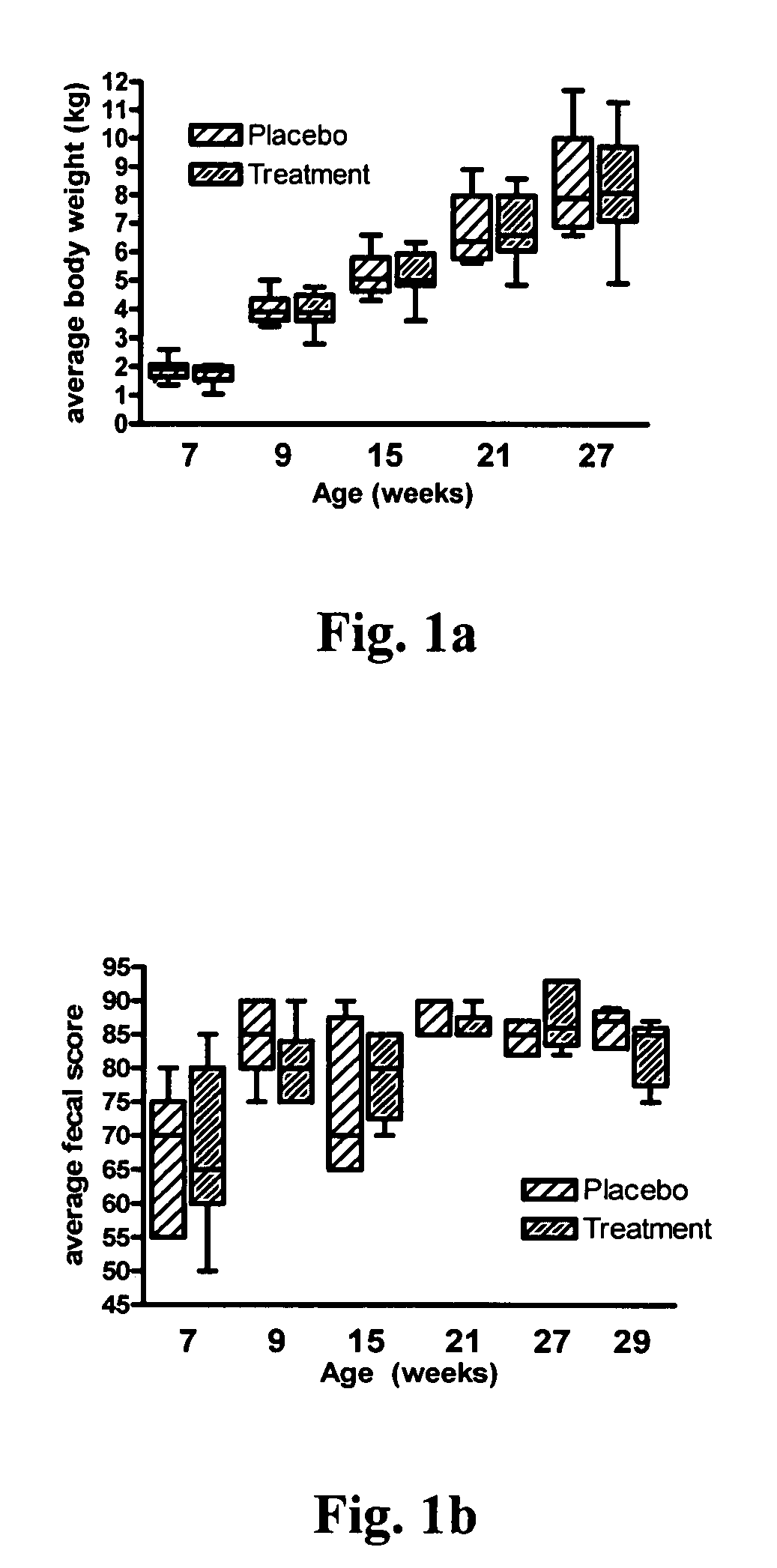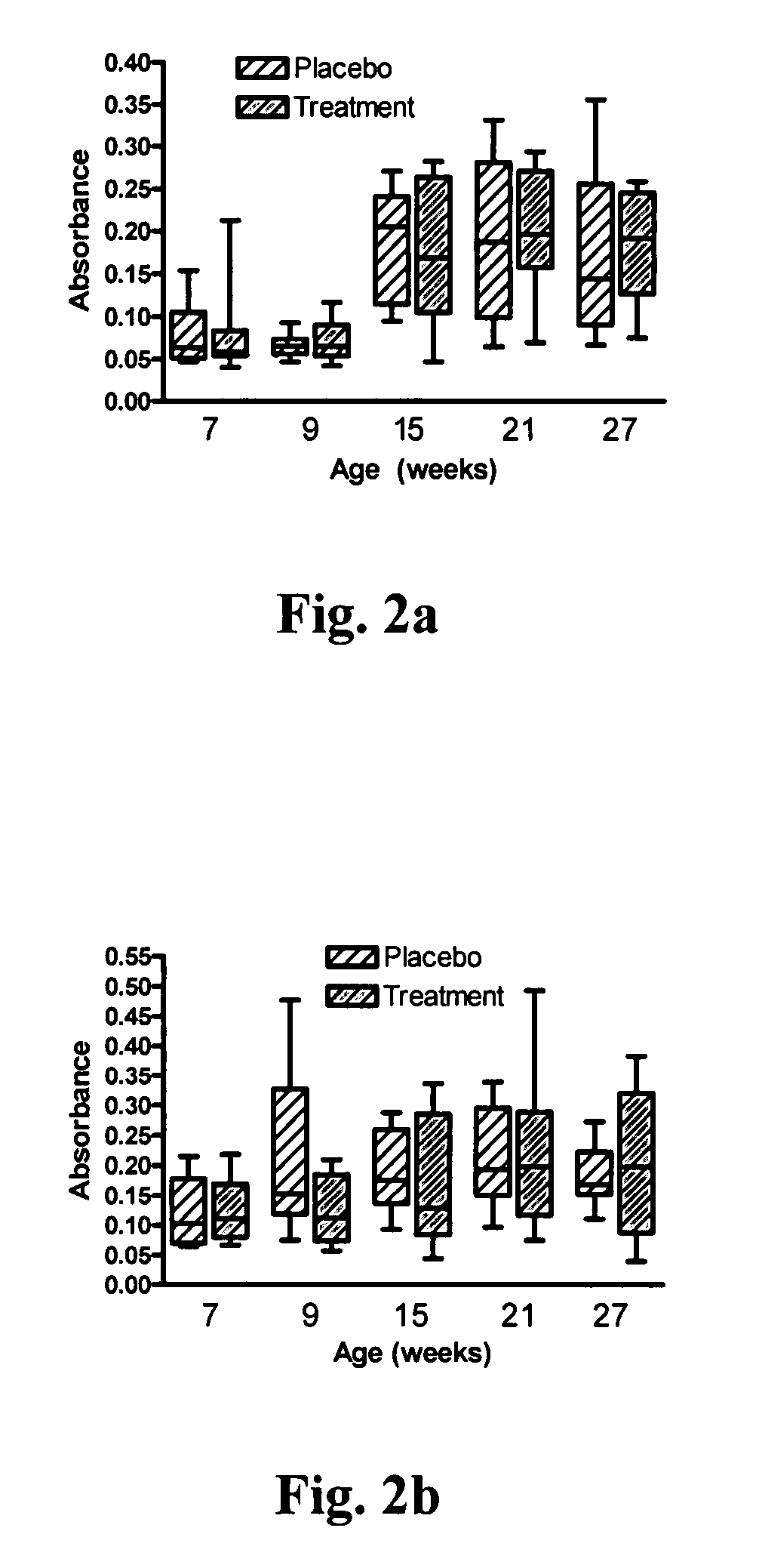Compositions and methods useful for modulating immunity, enhancing vaccine efficacy, decreasing morbidity associated with chronic FHV-1 infections, and preventing or treating conjunctivitis
a technology of immunity and composition, applied in the field of probiotics, can solve the problems of fhv-1 continuing to be a significant problem, increased side effects, infection of other cats, etc., and achieve the effects of reducing morbidity, preventing or treating conjunctivitis, and enhancing vaccine efficacy
- Summary
- Abstract
- Description
- Claims
- Application Information
AI Technical Summary
Benefits of technology
Problems solved by technology
Method used
Image
Examples
example 1
Animals and Experimental Parameters
[0083] Feline study population. Twenty, six-week old SPF kittens were purchased from a Liberty Laboratories (Liberty, N.Y.). The kittens were shown to be seronegative for feline leukemia virus antigen and feline immunodeficiency virus antibodies by ELISA. (Snap Combo, IDEXX Laboratories, Portland, Me.).
[0084] Experimental design. After a 10 day equilibration period, the kittens were randomized into two groups of ten kittens each and the treatment study started at 7 weeks of age. Between 0.25 and 0.28 g (˜5×109 CFU based on dilution count assays) of LBC ME5 PET E. faecium NCIMB 10415 (SF68) (Cerbios-Pharma SA, Switzerland) were added into individual 50 mL conical bottom polypropylene centrifuge tubes, capped, and stored at 4° C. for the duration of the study. Similar preparations were used for aliquots of the palatability enhancer (a typical pet food coating comprising liver digest as the main component was used) using 150 mg per tube. Aliquots we...
example 2
Sample Collection and Clinical Monitoring
[0086] The attitudes and behavior of the kittens were monitored daily throughout the study. Body weight was measured weekly. Blood, saliva, and feces were collected from all cats prior to starting probiotic or palatability enhancer supplementation at 7 weeks of age and at 9, 15, 21, and 27 weeks of age. In addition, feces were collected from kittens in the treatment group at 28 weeks of age. For each group of kittens, 5 fecal samples per day were randomly selected from the shared litterbox and scored using a standardized graphic scoring card and the daily group means determined. Fecal extracts for total IgA and total IgG measurement were processed according to the protocol described by Benyacoub J et al. (2003)). All samples were stored at −80° C. until assayed in batches.
[0087] The stools of all kittens were normal at the beginning of the supplementation period (7 weeks of age). One kitten in each group was removed from the study for reaso...
example 3
Fecal Assays
[0089] On each sample date, feces from each kitten were plated in eight serial 10-fold dilutions onto KF Streptococcus Agar and incubated for 48 hours at 37° C. aerobically. Ten colonies of each morphology type were picked off using sterile loops and placed in 1.2 mL brain heart infusion medium (BHI) (Becton Dickinson, Franklin Lakes, N.J.) and stored at −80° C. pending analysis. RAPD-PCR was performed on bacterial isolates from each sample to determine if viable E. faecium NCIMB 10415 (SF68) was in the stools of treated cats and to assess whether the probiotic was accidentally transmitted from the treated kittens to the control kittens. The thermocycler parameters were as follows: 30 cycles of one minute of denaturation at 95° C., one minute of annealing 40° C., four minutes extension at 72° C. The 25.5 μL reaction mixture included 2.45 μL 10× magnesium-free buffer (100 mM Tris-HCl, pH 8.3, 500 mM KCl), 3.22 mM MgCl2, 0.4 μL (1 Unit), JumpStart Taq DNA polymerase (Sigm...
PUM
| Property | Measurement | Unit |
|---|---|---|
| Composition | aaaaa | aaaaa |
| Concentration | aaaaa | aaaaa |
Abstract
Description
Claims
Application Information
 Login to View More
Login to View More - R&D
- Intellectual Property
- Life Sciences
- Materials
- Tech Scout
- Unparalleled Data Quality
- Higher Quality Content
- 60% Fewer Hallucinations
Browse by: Latest US Patents, China's latest patents, Technical Efficacy Thesaurus, Application Domain, Technology Topic, Popular Technical Reports.
© 2025 PatSnap. All rights reserved.Legal|Privacy policy|Modern Slavery Act Transparency Statement|Sitemap|About US| Contact US: help@patsnap.com



